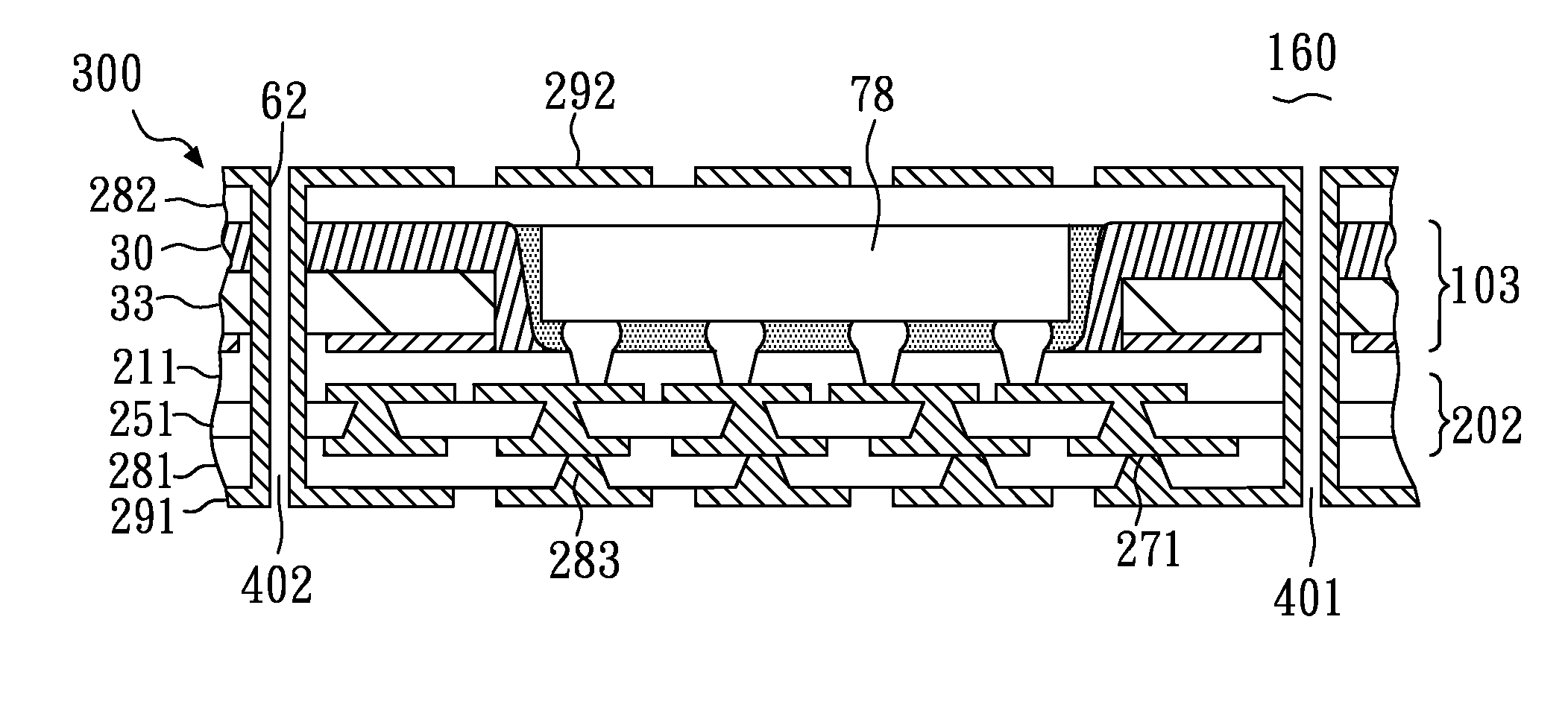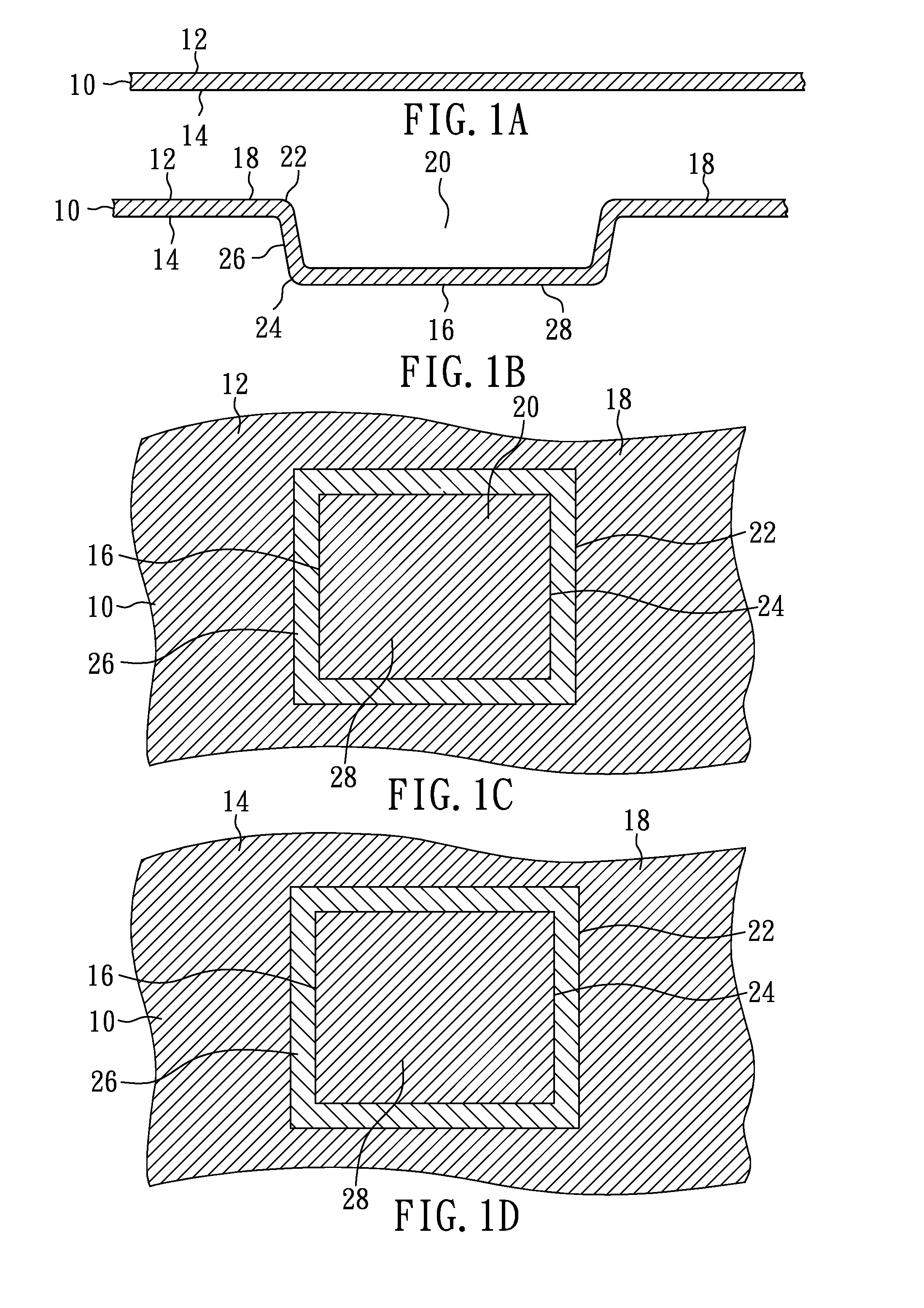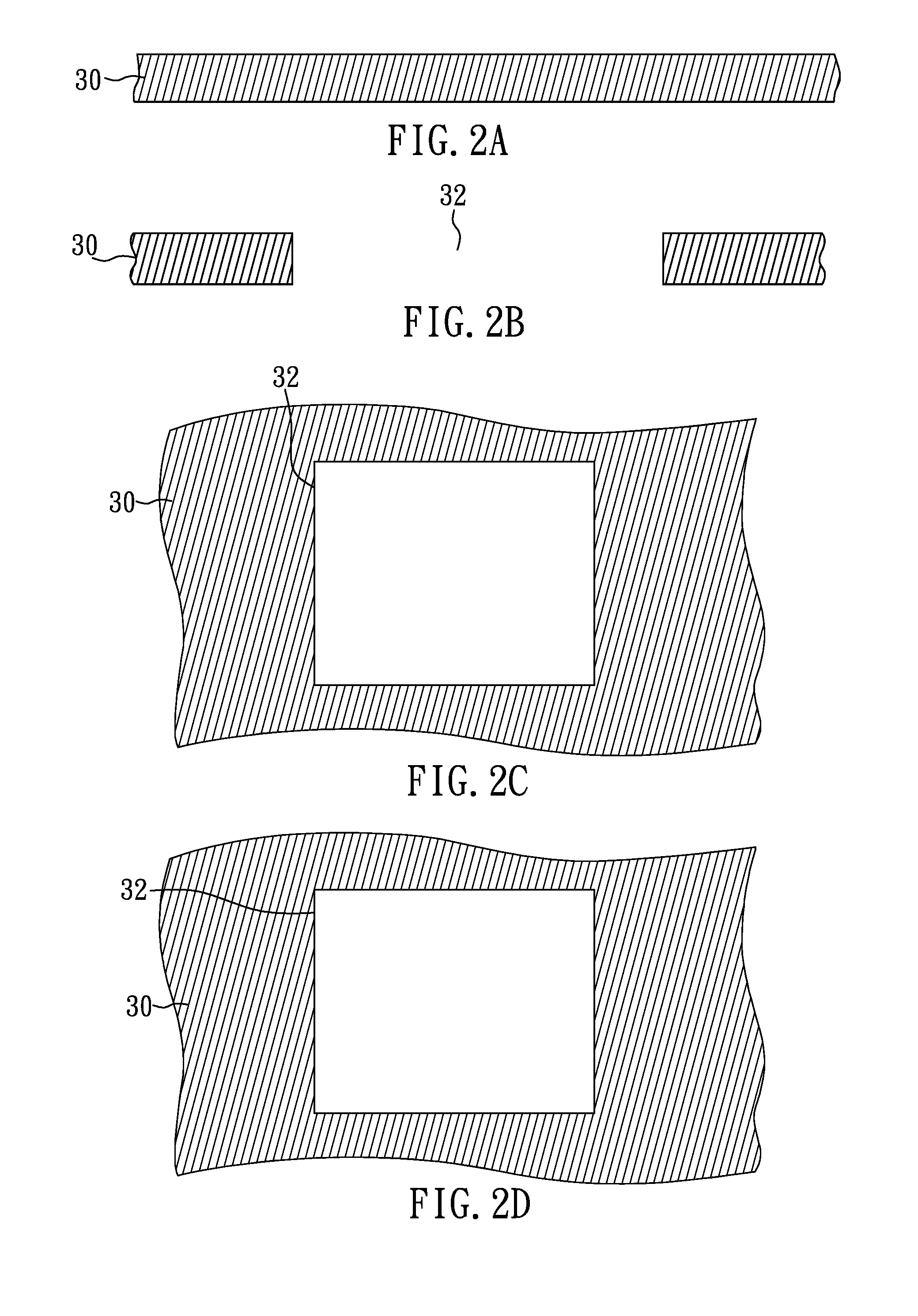Method of making cavity substrate with built-in stiffener and cavity substrate manufactured thereby
a technology of cavity substrate and built-in stiffener, which is applied in the direction of printed circuit manufacturing, semiconductor/solid-state device details, printed circuit aspects, etc., can solve the problems of increasing the thickness of the metal block, reducing the diameter of the metal block in order to increase the wiring density, and prone to warpage problems, etc., to achieve high manufacturing yield, easy manufacturing process, and low coefficient of thermal expansion
- Summary
- Abstract
- Description
- Claims
- Application Information
AI Technical Summary
Benefits of technology
Problems solved by technology
Method used
Image
Examples
embodiment 1
[0062]FIGS. 1A and 1B are cross-sectional views showing a method of making a sacrificial carrier with a bump and a flange in accordance with an embodiment of the present invention, and FIGS. 1C and 1D are top and bottom views, respectively, corresponding to FIG. 1B.
[0063]FIG. 1A is a cross-sectional view of sacrificial carrier 10 which is a metal plate and includes opposing major surfaces 12 and 14. Sacrificial carrier 10 is illustrated as a copper plate with a thickness of 200 microns. Copper has good flexibility and low cost. Sacrificial carrier 10 can be various metals such as copper, aluminum, alloy 42, iron, nickel, silver, gold, tin, combinations thereof, and alloys thereof.
[0064]FIGS. 1B, 1C and 1D are cross-sectional, top and bottom views, respectively, of sacrificial carrier 10 with bump 16, flange 18 and cavity 20. Bump 16 and stamped cavity 20 are formed by mechanically stamping of sacrificial carrier 10. Thus, bump 16 is a stamped portion of sacrificial carrier 10 and fl...
embodiment 2
[0119]FIGS. 6A-6I are cross-sectional views showing a method of making another cavity substrate with conductive vias in via openings of dielectric layer according to another aspect of the present invention.
[0120]For purposes of brevity, any description in Embodiment 1 is incorporated herein insofar as the same is applicable, and the same description need not be repeated.
[0121]FIG. 6A is a cross-sectional view of sacrificial carrier 10 with bump 16 extending from flange 18 in the upward direction. Sacrificial carrier 10 used in this embodiment is the same as that illustrated in Embodiment 1, except that no stamped cavity is defined in bump 16 and bump 16 has a rectangular cylinder shape with a constant diameter according to this embodiment.
[0122]FIG. 6B is a cross-sectional view of the structure with adhesive 30 on flange 18, stiffener 33 on adhesive 30, dielectric layer 211 on stiffener 33 and interconnect substrate 201 on dielectric layer 211. Bump 16 is inserted into opening 32 an...
embodiment 3
[0137]FIGS. 7A-7F are cross-sectional views showing a method of making a three-dimensional semiconductor assembly with a cavity substrate, an embedded semiconductor device and dual build-up circuitries according to yet another aspect of the present invention.
[0138]For purposes of brevity, any description in Embodiments 1 and 2 is incorporated herein insofar as the same is applicable, and the same description need not be repeated.
[0139]FIG. 7A is a cross-sectional view of the structure manufactured by the steps shown in FIGS. 1A-5A. In this illustration, interconnect substrate 202 includes first circuitry layer 231, first insulating layer 251, first conductive vias 263 and second circuitry layer 271.
[0140]FIG. 7B is a cross-sectional view of cavity substrate 300 with selected portions of first circuitry layer 231 exposed from cavity 31. Bump 16 and flange 18 are removed to expose dielectric layer 211, and then via openings 213 are formed through dielectric layer 211 to expose selecte...
PUM
| Property | Measurement | Unit |
|---|---|---|
| thickness | aaaaa | aaaaa |
| height | aaaaa | aaaaa |
| height | aaaaa | aaaaa |
Abstract
Description
Claims
Application Information
 Login to View More
Login to View More - R&D
- Intellectual Property
- Life Sciences
- Materials
- Tech Scout
- Unparalleled Data Quality
- Higher Quality Content
- 60% Fewer Hallucinations
Browse by: Latest US Patents, China's latest patents, Technical Efficacy Thesaurus, Application Domain, Technology Topic, Popular Technical Reports.
© 2025 PatSnap. All rights reserved.Legal|Privacy policy|Modern Slavery Act Transparency Statement|Sitemap|About US| Contact US: help@patsnap.com



